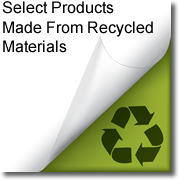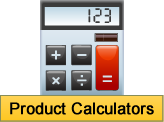COMMONLY USED TERMS IN THE PAPER INDUSTRY
Virgin kraft: Natural kraft paper, also called “Virgin Kraft”, is preferred in many applications due to its strength. It has very high tear resistance and superior bursting strength. It is made of American raw materials and can contain up to 5% recycled materials. Natural kraft paper is made via a process of chemically breaking down wood into long fibers, which provide maximum strength. The color is usually brown, though it is possible to achieve other colors by adding bleach and/or dyes to the pulp. It can be coated with polyethlene material for extra strength and resistance to liquids and leakage. Natural Kraft can be used as wrapping and book covers, paint masking, stationary products, and can be used in place of corrugated boxes. Heavier kraft requirements can be satisfied by the use of linerboard, with common basis weights of 26#, 33#, 42# and 69# per thousand square feet.
Recycled kraft: Recycled kraft is made from 100% recycled materials, which are primarily corrugated boxes and bag clipping. It is more environmentally friendly than natural kraft and is priced less per pound. It provide less tear and bursting strength and will break down easily when exposed to friction or moisture compared to natural kraft. It can be used as newspaper bottom wrap, interleaves, textile wrappers, garment underlay paper, internal carton packaging, void filler, and box/tray liners.
Butcher wrap: White butcher paper is primarily used in the food service industries and is FDA approved. It is also used in industries where an attractive white paper for general wrapping and protective purposes is desired. Butcher paper is made from chemically breaking down wood chips and turning them into long fibers that produce maximum strength. Bleach is added to the pulp during the paper making process to produce the white color, and some wet strength additives are included to keep the sheet from breaking down where moisture is present. Sizing (starch) is added to prevent liquids from seeping through the paper, and the paper is given an unglazed dry finish, which is calendarized or polished at the paper machine. The tear resistance and superior bursting strength of this paper make it ideal for use as a meat, fish and poultry wrap. It can be used to protect sandwiches, both hot and cold, and for wrapping foods in general due to its ability to resist grease, moisture and meat juices. Many restaurants use butcher paper as table covers and it it used in pharmaceutical applications.
Bogus: Grey bogus paper, which is also known as “brooder paper,” “gray wrap,” or “chick paper,” is a versatile multipurpose, economical product that provides great absorbency. It may have either a dry or rough finish or smooth finish. Due to the fact that it provides less strength than kraft paper, it is best used to cover, interleave or fill, not protect, since it absorbs moisture and is bulky with little strength. Bogus is made from 100% post-consumer waste paper stock with a small percentage of wood pulp occasionally added. As noted, it is an exceptional interleave and performs well as internal protection such as serving as furniture wrap with a carton. It is also used for void filling, protective wrapping for automobile parts, lining boxes and barrels and in the meat processing industry to soak up grease. This paper is also used in the poultry industry as chick hatchery liners.
Newsprint: Can also be referred to as “Packing Newsprint”, is made from recycled newspaper. It is low cost, white, clean and readily available. It is environmentally sound since it is naturally degradable in water. Much of newsprint is from “cull” rolls that cannot be run through high-speed newspaper printing presses. Newsprint is very versatile and includes package stuffing, cushioned wrapping, dunnage material, movers packing, void filling and internal packaging. It is very suitable for wrapping products such as glassware, mirrors, chemical products and drugs.
Masking Paper: Green masking paper is a non-porous recycled paper used primarily by the automotive industry to cover and protect a surface that is to be painted with lacquer and enamel paint. White urethane paper, see freezer paper, has a poly coating for a water resistant, lint free surface. It prevents strong urethane solvents and paints from penetrating.
Bleached kraft: A grade of kraft, virgin or recycled, that has gone through a chemical process of chlorine treatment to whiten pulp. See Natural Kraft.
Freezer paper: Freezer papers are polyethylene coated and vary from a 40# base paper with 5# of poly to 50# base paper with 10# of poly. It is widely used in the food industry and is made from bleached wet strength kraft with sizing making it FDA approved. All grades offer high moisture resistance because the polyethylene barriers will not crack at cold temperatures. This paper prevents freezer burn and is very popular during hunting season as a wrapper for game. It also serves well as a fish, cheese or floral wrap. The polyethylene liner keeps thing like grease, ketchup, mayonnaise or oil from leaking through and is also used for paint masking to prevent strong urethane solvents and paints from penetrating.
Pallet or skid: A platform for storing or moving freight.
Micrometer: Device that measures the thickness or caliper of paper.
Caliper: The thickness of a sheet measured under specified conditions. It is usually expressed in thousands of an inch (points or mils).
Bundle: Refers to how sheets are wrapped together once they are sized. A typical bundle runs 25#, 50# or 100#. It is occasionally packaged by sheet count.
Dunnage: A term to denote paper used as filler. It can be used as packing material to protect merchandise from damage during transit.
Core: Shaft in the center of a roll around which the web of paper is unwound.
Jumbo roll: A roll measuring over 24” in diameter and weighing in excess of 500lbs.
Sizing: The treatment of paper, which gives it resistance to the penetration of liquids. Sizing is used in the makeup of butcher paper and freezer paper.
M: Abbreviation for a quantity of 1000 sheets of paper.
Basis weight: Weight, measured in pounds, of a ream of paper. Depending on the grade of paper reams can be based on different sizes. Usually expressed in 1000 foot or 3000 foot connotations.
M weight: The weight of one thousand sheets of a grade in its basic size.
Coater: An off – machine unit which applies a coating of clay to one or both sides of a base sheet of paper. The coating represents 25% to 30% of the total weight of the finished paper.
Calender: An assembly of vertical rolls, which imparts a final finish to paper at the end of the paper machine. The paper is passed between the rolls to increase the smoothness and gloss of the surface.
Grain long: Grain running along the length, or long side, of a sheet of paper.
Grain short: Grain running along the width, or short side, of a sheet of paper.
COMMONLY USED BOARDS IN THE PAPERBOARD INDUSTRY
Gypsum Definition: Gypsum board is made from gypsum rock that is mined, collected, crushed, ground and calcined into plaster of Paris. The resulting white powder is mixed with water and other components to form a slurry, which is then sandwiched between two continuously moving sheets of recycled paperboard to produce gypsum wallboard.
Common uses: Pallet covers, interleaving, slip sheets.
Chipboard Definition: An inexpensive low-density board made from waste paper. See recycled paperboard.
Common uses: Packaging, pallet covers, notepads, interleaving and tear tape.
Linerboard Definition: Linerboard is the heavy brown kraft paper used in making corrugated boxes. It gets its strength from the long wood fibers of the pine tree and a smooth printing surface from shorter hardwood tree fibers. Generally, linerboard is a two-ply sheet made with some fraction of recycled fibers in the bottom sheet. Medium linerboard is a recycled paper and is used for forming the accordion like inner section of the corrugated boxboard.
Common uses: Boxes, pallet covers, interleaving and floor coverings.
Clay Coated News Definition: This product is manufactured by using post-consumer waste. Calender stacks apply a surface treatment to one or both sides of the board. Next a coating process involving two applications
(a Vari-Bar to apply the base coat of clay and an Air Knife to apply the finish coat).
Common uses: Dry goods and baked goods, pharmaceuticals, household products, soap and detergents, paper and tissue boxes, retail and specialty boxes and fast food.
Clay Coated Kraft Definition: Clay coated kraft is a high performance unbleached, coated paperboard with an endless variety of applications. Known for its quality, consistency, superior strength and excellent printability, clay coated kraft is made from pure virgin fibers which gives this board superior strength characteristics for outstanding product protection. This product meets FDA requirements for direct food contact for most applications.
Common uses: General cartons, food packaging, extra strong cartons, point of sale display, covers and folders garment labels, pharmaceuticals, hardware, housewares, baked goods and sporting goods.
SBS: Solid Bleached Sulfate Definition: A class of paper generally used in grades of white, as well as for boards where physical strength is of great importance. This board is produced by a process, which utilizes sodium sulfate as its principal chemical constituent. The pulp is then fully bleached with chlorine dioxide in multistage bleaching operations. The stronger grades are produced from softwoods, though large quantities of hardwood sulphate pulps are produced. It can be clay coated or have a poly coat on one or two sides.
SBS Common uses: This is a specialty board used for many purposes. Main uses are folding boxes and tag and label. Also, general cartons, food packaging, prestige cartons, point of sale displays, greeting cards, covers and folders, record and video sleeves, product cards and mailers and garment labels.
SUS: Solid Unbleached Sulfate Definition: This board is produced mainly from softwood trees containing a high proportion of resin and are cooked for short cycles. The pulp has a very low color, and is unsuitable for bleaching because of its high chlorine requirement. It is characterized by exceptional strength.
Common uses: See SBS.
Single Face Corrugated Flute Definition: Single faced corrugated paper is made by combining an outer liner with a fluted inner corrugated material and is rigid in only one direction. Single face corrugated is most often produced in roll form, and is available in A or B flute size. A is better for light or fragile items because it is thicker and provides more cushioning. B has better flat crush and is good where the amount of strength rather than cushioning is critical. This product is made from a combination of wood pulp (the outer layer is kraft linerboard) and recycled fiber (the inner ply is 100% recycled corrugated medium).
Common uses: This product is very versatile and is used mostly for protective padding such as; cushioned wrapping, cushioned work surface covers, movers packing. Its shock absorption makes it very unsuitable for wrapping products such as glassware, mirrors, china, electronic components and manufactured goods.


